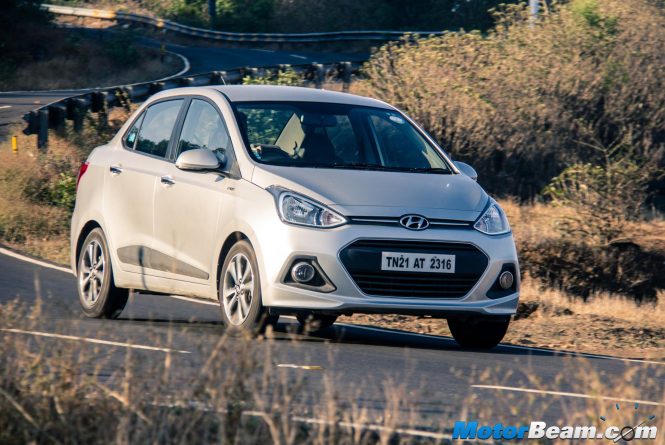The Hyundai Xcent taxi variant will come void of any features and get cab specific changes like only rear power windows, no central locking and different seat upholstery.
It is a known fact that the Maruti DZire is one of the best selling vehicles in India and a major chunk of those volumes come from the commercial space where the compact sedan is highly appreciated. More so, since Maruti sells the DZire Tour that is a trim specific to cab operators and is loaded only with the essentials. Working on similar lines, Hyundai is preparing to introduce the cab friendly Xcent compact sedan in the market that will miss out on several features in favour of a low asking price.
The Hyundai Xcent taxi variant is based on the entry-level trim and will be missing out on a host of equipment including central locking, front power windows, blackened pillars, cooled glovebox and wheel covers. The seats will also be upholstered in a different fabric-leatherite combination material aimed to provide a premium finish. The car is bare bones in other sense, missing out on all creature comforts.
In terms of power, the taxi spec Hyundai Xcent will use the same 1.2-litre petrol and 1.1-litre diesel engines while the petrol version will also be available with the optional CNG kit. The latter is certainly a boon for the Korean automaker that will get a slight advantage in markets like Delhi and NCR, considering the Maruti DZire Tour is only available in a diesel avatar. This makes the Xcent less polluting as per the capital’s latest regulations.
All said, the taxi variant will now be positioned as the base variant in the Hyundai Xcent’s lineup with the petrol trim priced around Rs. 5.20 lakhs while the diesel version is expected at around Rs. 6 lakhs (ex-showroom). Dealerships have stated that they will be introducing the taxi variant only after the existing stocks of the base Xcent models are sold. Hyundai’s compact sedan averages a decent 4000 units every month and given the viability of the taxi segment, sales are expected to see a steady rise in the coming months.
Source – AutocarIndia.com

